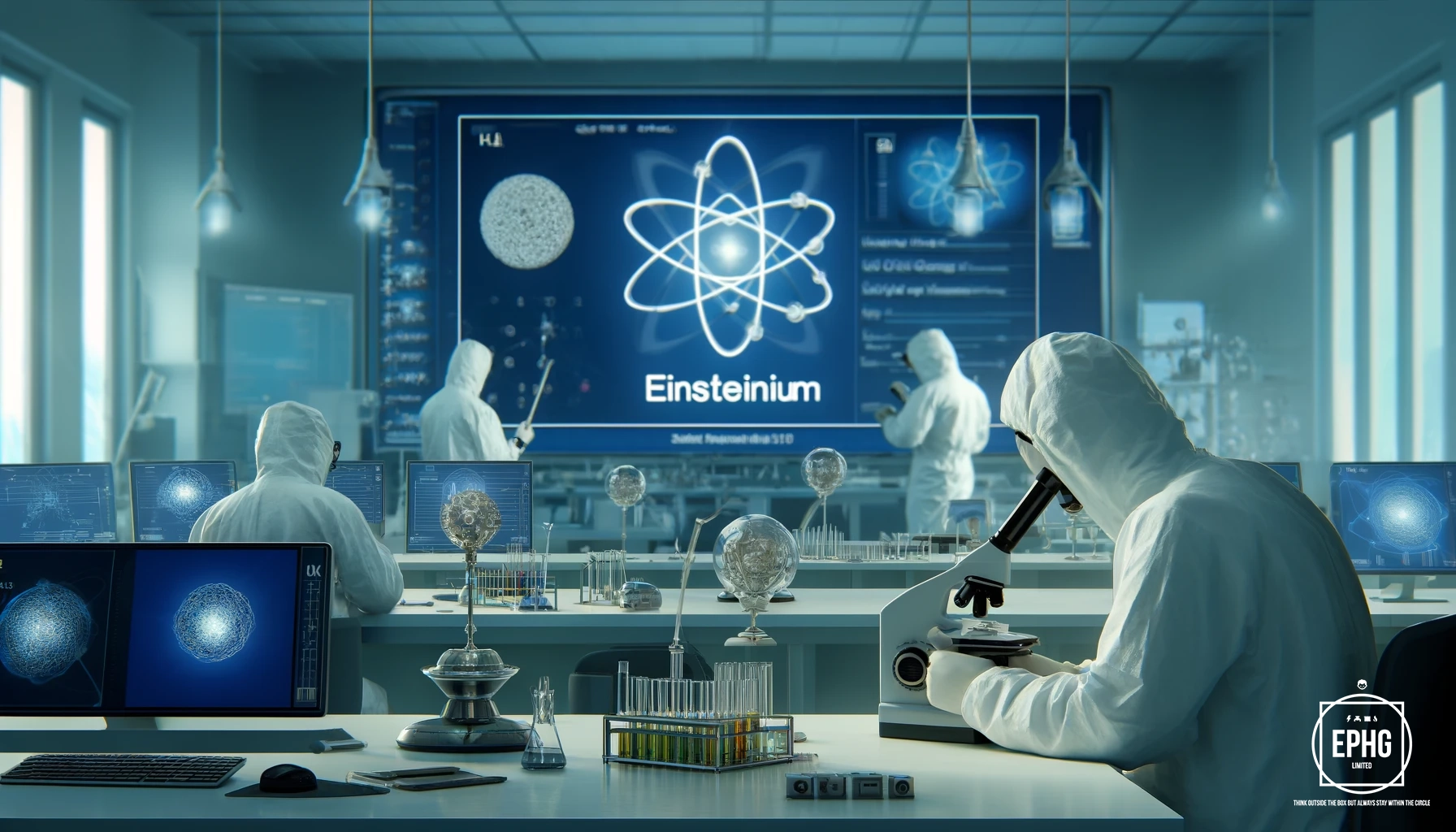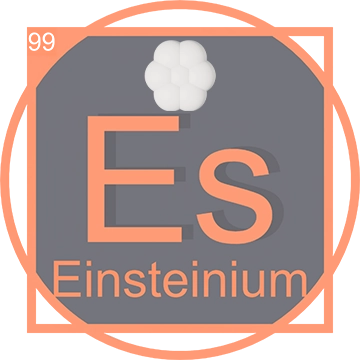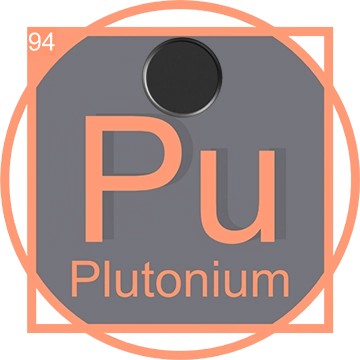Unveiling Einsteinium: A Marvel of the Periodic Table
Introduction to Einsteinium
Einsteinium, with the symbol 'Es' and atomic number 99, is a synthetic, silvery, radioactive metal and a member of the actinide series, located in the periodic table. This rare element was discovered in the debris of the first hydrogen bomb explosion in 1952, named in honor of Albert Einstein. Its creation marked a significant milestone in the exploration of synthetic elements.
Discovery of Einsteinium

Einsteinium was discovered on November 1952 by a team of American scientists at the Lawrence Berkeley National Laboratory and the Argonne National Laboratory. It was identified in the fallout from the "Ivy Mike" nuclear test, the first successful test of a hydrogen bomb. The discovery of einsteinium was not announced until 1955 due to military security concerns related to the Cold War.
Einsteinium in the Periodic Table
As part of the actinide series, einsteinium is situated among elements known for their f-electron configurations which contribute to their complex chemical behavior. Einsteinium is placed right after californium and before fermium. Its position in the periodic table is crucial for researchers studying the transuranic elements, which are typically synthesized in nuclear reactors or particle accelerators.
Physical and Chemical Properties

Einsteinium is highly radioactive, with a prominent isotope, einsteinium-253, which has a half-life of about 20 days. It exhibits a +3 oxidation state commonly. Under certain conditions, it can also show a +2 state. The element’s most stable isotopes are Einsteinium-252, with a half-life of 471.7 days, and Einsteinium-254, with a half-life of 275.5 days.
Applications in Science and Technology
Due to its radioactivity and scarcity, einsteinium has few applications outside of basic scientific research. It is primarily used in the synthesis of higher atomic number elements and in various nuclear science experiments. Scientists use einsteinium to generate newer elements such as mendelevium, by bombarding it with alpha particles. This research provides valuable insights into the properties of heavy elements.
Modern Applications and Technological Impact
While einsteinium itself has limited practical applications, the study of einsteinium and its compounds has helped scientists understand the structure and properties of heavy actinides. This research has implications in fields ranging from nuclear physics to the potential development of new materials capable of withstanding extreme radiation and temperatures.
The Future of Einsteinium Research

The ongoing study of einsteinium could lead to breakthroughs in nuclear reactor design and the safe handling and storage of radioactive materials. Researchers are also exploring its potential use in targeted cancer treatments, utilizing its radioactive properties to destroy cancer cells.
Production of Einsteinium
Einsteinium is not found naturally on Earth and is instead produced in particle accelerators and nuclear reactors. It is typically synthesized by bombarding lighter elements like plutonium with neutrons, causing the nuclei to absorb the neutrons and undergo a series of beta decays, transforming into heavier elements, including einsteinium. This process involves complex and precise scientific experimentation, reflecting the advanced capabilities of modern nuclear chemistry.

Common Co-occurring Elements
During the production of einsteinium, several other transuranic elements are often synthesized as by-products. These include californium, fermium, and mendelevium. Like einsteinium, these elements are highly radioactive and require specialized facilities for their production and handling.
Modern Applications of Einsteinium
Today, einsteinium has limited but significant applications in scientific research. It is primarily used in the synthesis of new elements and in high-energy physics experiments to study the properties of the actinide series. Additionally, einsteinium’s intense radioactivity makes it useful in the production of heavy ion beams for research in nuclear physics.
Future Prospects of Einsteinium

The future of einsteinium research holds potential for groundbreaking discoveries in material science and nuclear medicine. Scientists are exploring the use of einsteinium’s radioactive properties for targeted radiation therapy, which could lead to new treatments for cancer. Moreover, ongoing research into the quantum mechanical behaviors of heavy elements like einsteinium could revolutionize our understanding of atomic structure and nuclear forces.














